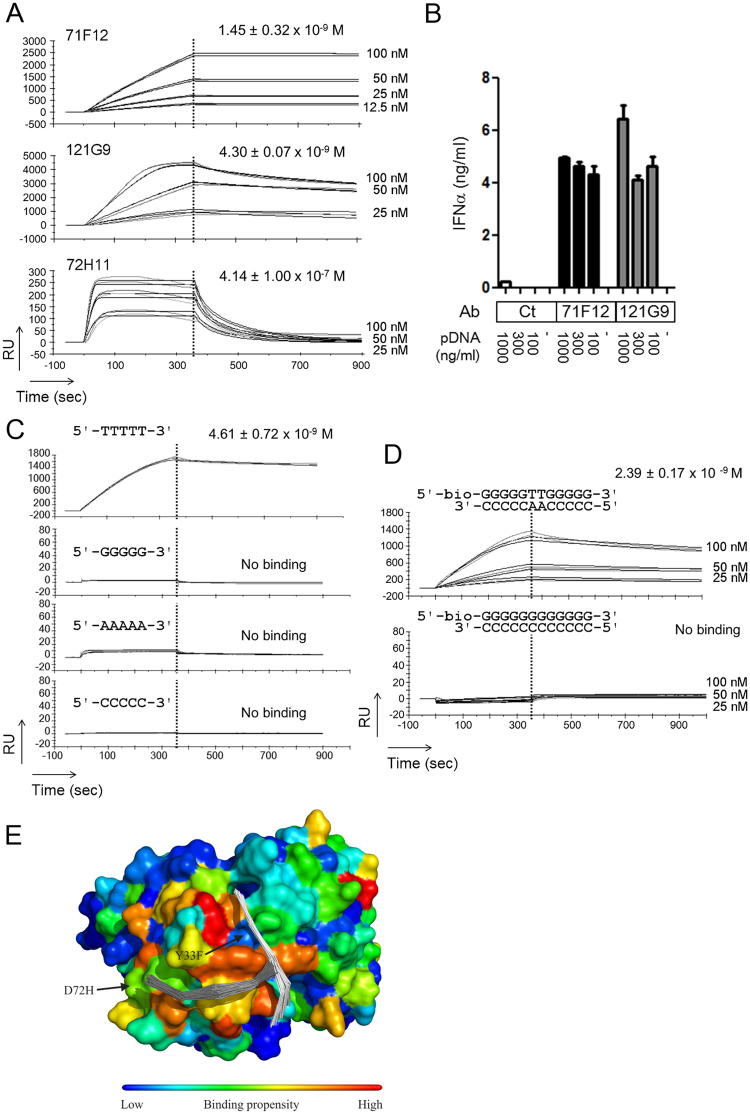Figure 4.
High-affinity anti-DNA antibodies bind to both ds and ssDNA, and sensitize PBMC to dsDNA for IFNα production. (A) SPR analysis of 71F12 and 121G9, and polyreactive clone, 72H11. Biotinylated dsDNA (5′-TAATACGACTCACTATAGGG -3′) was immobilized on the chip. (B) Enhanced IFNα production of PBMC by 71F12 and 121G9. Freshly isolated PBMCs (5 × 105) were cultured with different amounts of pDNA (100, 300, or 1,000 ng/ml) and 5 μg/ml of anti-DNA antibodies, or control human IgG1 (Ct). IFNα concentration was determined by ELISA. (C and D) 71F12 preferentially binds to thymine-containing DNA. 71F12 (100 nM, unless otherwise indicated) was loaded onto the sensor chip immobilized with ss (C), or dsDNA (D). The mean values of KD ± s.e.m. from three experiments are shown. (E) Flexible docking of ssDNA to 71F12 antibody. Two 5-mer ssDNA binding sites are indicated by backbone traces of the top-100 solutions within the top two clusters. The sites predicted to have high DNA binding propensity are indicated by warmer colors mapped onto the molecular surface of the antibody. Two of the mutations from the germline ancestor (Y33F and D72H) are indicated.

